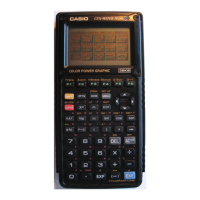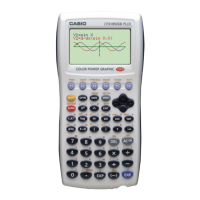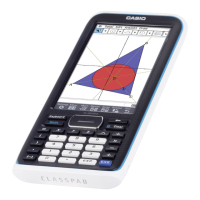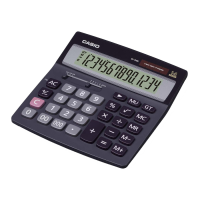20070201
k Using Solve Calculation Function in a Program
The following is the syntax for using the Solve function in a program.
Solve( f ( x ), n , a , b )
Upper limit
Lower limit
Initial estimated value
Example Program
1
Solve( 2X
2
+ 7X – 9, 1, 0, 1)
1
K 41
• In the function
f ( x ), only X can be used as a variable in the expression. Other variables (A
through Z,
r ,
θ
) are treated as constants, and the value currently assigned to that variable is
applied during the calculation.
• Input of the closing parenthesis, lower limit a and upper limit b can be omitted.
k Using Statistical Calculations and Graphs in a Program
Including statistical calculations and graphing operations in a program lets you calculate and
graph statistical data.
u To set conditions and draw a statistical graph
Following “StatGraph”, you must specify the following graph conditions:
• Graph draw/non-draw status (DrawOn/DrawOff)
• Graph Type
•
x -axis data location (list name)
•
y -axis data location (list name)
• Frequency data location (list name)
• Mark Type
8-6-9
Using Calculator Functions in Programs
# Solutions obtained using Solve may include
errors.
# You cannot use a differential, quadratic
differential, integration, Σ , maximum/minimum
value or Solve calculation expressions inside of a
Solve calculation term.

